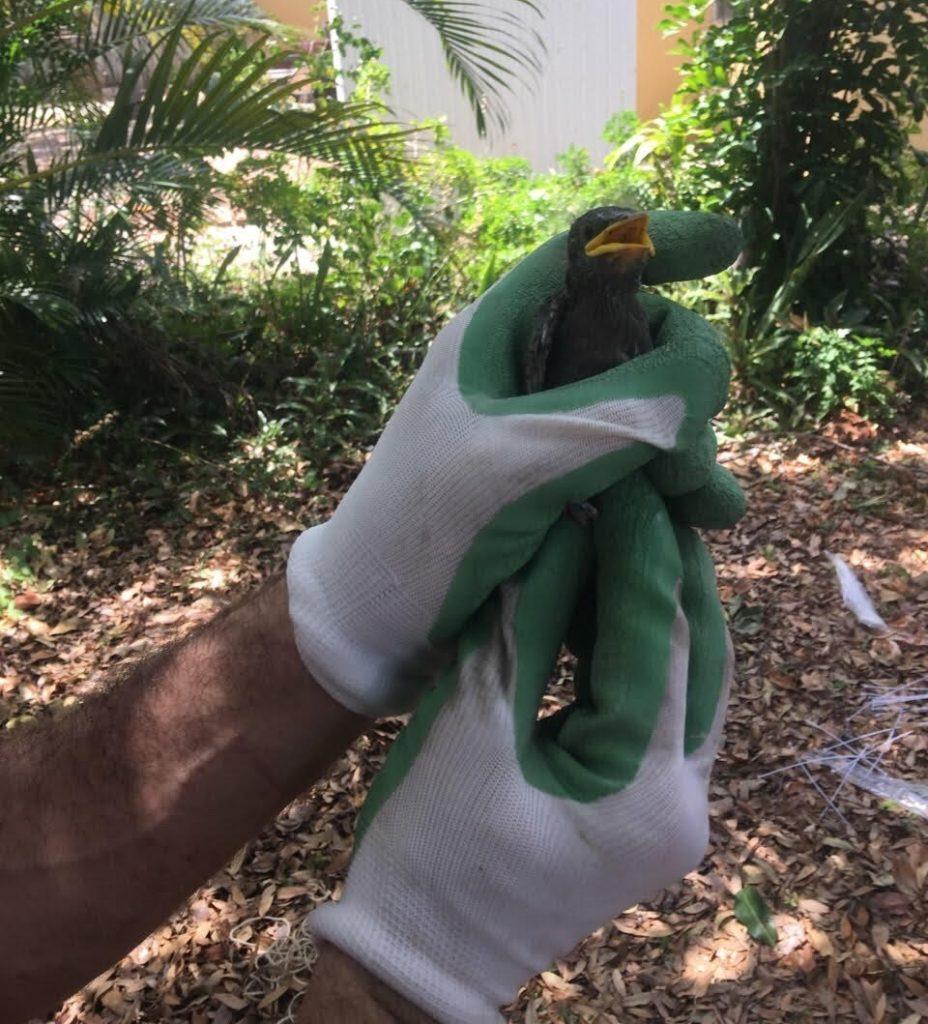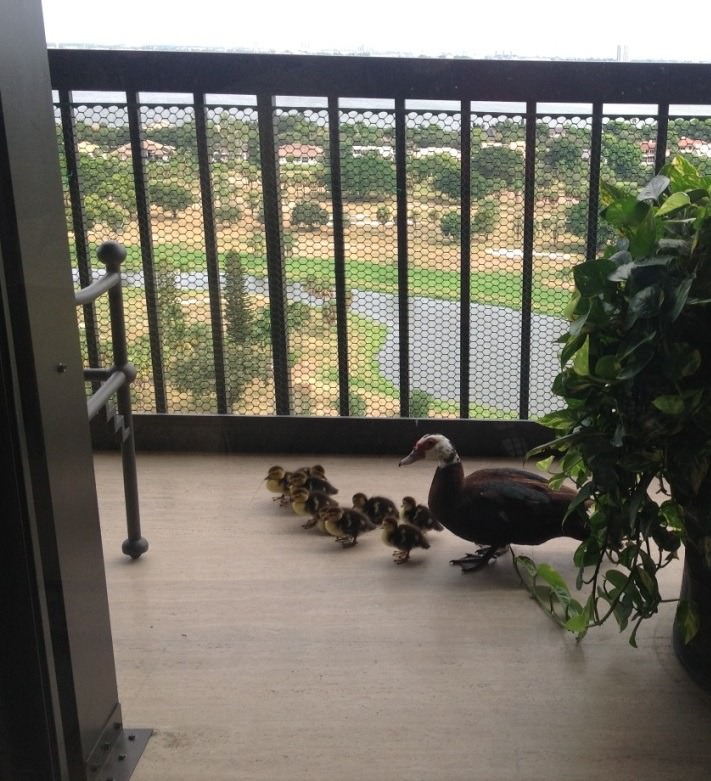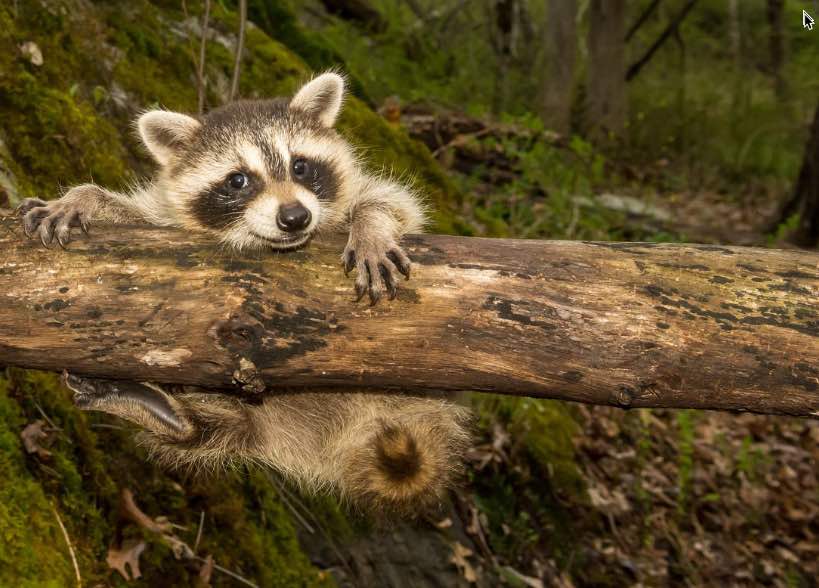In nature, baby season usually rolls into full swing during spring. Squirrels, raccoons, ducks and other wildlife parents are nosing around for a suitable space to set up their nursery.
Perhaps that’s under your porch. Or in a shed. Or up in your attic. Animals simply want safe shelter — typically temporarily — to raise their families.
Some people welcome furry and feathered neighbors, but if you’re a little less excited by new roommates, we spoke with wildlife experts who advocate earth-friendly, humane, non-poisonous and non-lethal solutions to happily resolve interspecies encounters for all involved.

“There is a humane solution to every wildlife conflict — without exception,” says Robert Ruderman of Humane Wildlife Consulting of South Florida. “As residents of this planet, it is important that we learn how to coexist with wildlife without resorting to unnecessary and cruel means of removal and disposal.”
What Is Humane?
Many animal advocates warn that trapping and removal is often unfair or cruel to captured wildlife, which may be harmed, separated from families and familiar territory, or killed. “Contrary to popular belief, live trapping and relocation rarely ends well for wildlife,” states an article on The Humane Society of the United States (HSUS) website.
Prevention, patience and “humane harassment” are touted as effective alternatives.

Penthouse Ducks & Other Nesting Tales
In Colorado, house wrens occasionally build nests in decorative door wreaths, says Jamie Weiss, Habitat Hero coordinator for Audubon Rockies.
A red squirrel in New York gave birth to five babies in an attic. Nice pick. It was the home of Shelly Schlueter, president of the nonprofit wildlife rehabilitation facility Wildkind Care.
Squirrels aren’t the only attic opportunists. Starlings selected a dryer vent in a Fort Lauderdale attic for their nest. And in West Palm Beach, nine fuzzy ducklings hatched inside a planter on the balcony of a 20th-floor penthouse apartment.
“Mothers are very resourceful,” says Debra Parsons-Drake, senior director of animal rescue, care and sanctuary at HSUS. “Our HSUS animal care centers have reported cases of finding wildlife families behind hurricane shutters, under boat covers, in door wreaths, and underneath car grills and hoods. This time of year, it pays to take a close look anytime you are uncovering or opening something that has been undisturbed for a while.”

Establish a No-Vacancy Zone
Wildlife experts offer tips to encourage animals to keep their distance:
- Don’t leave pet food or other attractants outside unattended.
- Fix cracks and crevices well before uninvited guests venture in. If animals are already inside, wait before sealing up. The animals need exit points so the full family is able to escape.
- Remove branches brushing up on buildings that offer leverage for climbing inside.
- For other trees and shrubs, avoid trimming in spring to protect nesting wildlife, says Parsons-Drake. “Every spring, our animal care centers are flooded with infants who have been injured and orphaned in tree-related incidents,” she says.

Persuasive Eviction
If wildlife is not posing a danger or being destructive to your property, the ideal scenario is to wait for animals to exit on their own — which usually occurs naturally when the babies are old enough.
But for those who want them out ASAP, “humane eviction” techniques are relatively easy and inexpensive.
These techniques are recommended for mammals who are able to relocate their own youngsters. They are not intended for nesting birds, many of which are protected by law.
- Turn on light.
- Set up a radio, preferably tuned to a talk station.
- Be noisy. For example, rattle cans of coins.
- Add an annoying nontoxic scent. An HSUS article suggests placing rags soaked in cider vinegar in a fireplace to evict mammals getting cozy in your chimney. Ruderman offers an elaborate recipe: Steep six crushed garlic gloves overnight in a bowl of boiling water. To the strained liquid, add 1/2 ounce of cedarwood oil, 1/2 ounce of neem oil, 1/2 ounce citronella oil, 1/2 ounce of peppermint oil, 1/2 ounce of rosemary oil, 1 ounce of biodegradable dish soap or vegetable oil and 1 ounce of apple cider vinegar or white vinegar. Pour into a gallon jug, add water and shake. Spritz with a mist spray bottle.
- Install an artificial predator decoy, especially one that’s motion-activated and makes sounds.
- If babies are part of an evicted animal family, be sure to allow the mom time to relocate her youngsters. Often she’ll tote them out one by one in her mouth.
Enjoy the Experience
For questions about wildlife, Parsons-Drake recommends phoning a licensed wildlife rehabilitator or browsing online resources. “Fortunately, most issues can be humanely resolved,” she says, “often while providing people with a rare and wonderful opportunity to see wildlife families up close.”
This article was originally published on March 14, 2019.
The post Humane Approaches to Spring Babies on Your Property appeared first on Earth911.








